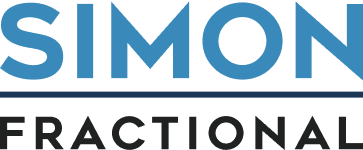In today’s competitive B2B SaaS landscape, personalization has become essential for capturing audience attention and driving engagement. The ability to deliver tailored experiences that resonate with decision-makers and influencers can mean the difference between closing a deal and losing it to a competitor. However, the challenge lies in implementing personalized strategies at scale, especially for companies targeting multiple industries or personas.

Why Personalization Matters
A study by Epsilon revealed that 80% of consumers are more likely to make a purchase when brands offer personalized experiences. In the B2B SaaS world, where decision-making involves multiple stakeholders, tailored messaging can significantly impact lead generation, conversion rates, and customer retention. For example, personalized email campaigns have been shown to deliver six times higher transaction rates than generic messages.
Strategies for Personalization at Scale
- Data-Driven Segmentation: Use CRM and analytics tools to segment your audience by industry, role, and behavior. HubSpot’s segmentation features, for example, allow marketers to create specific lists based on user actions and preferences. Understanding your audience at a granular level enables targeted communication that addresses their pain points directly.
- Dynamic Content: Implement dynamic content on your website and email campaigns. Tools like Marketo and Optimizely enable the delivery of personalized content based on user behavior. For instance, a returning website visitor from the healthcare sector could automatically see case studies relevant to their industry.
- ABM (Account-Based Marketing): Focus on high-value accounts with personalized outreach. ABM platforms such as Demandbase help align marketing and sales efforts to deliver tailored experiences for decision-makers within targeted accounts.
Real-World Example
In 2022, GrowthFlow Technologies, a mid-sized SaaS company, increased its lead conversion rate by 35% by implementing a dynamic landing page strategy. Each visitor’s industry and role determined the content displayed, creating a tailored experience that resonated deeply with their needs. This approach also improved user engagement metrics, with a 25% increase in time spent on the site.
The Role of Technology
Leveraging AI and machine learning can enhance personalization efforts. For instance, AI-driven recommendations on your website can guide users toward relevant case studies or solutions, increasing time-on-page and engagement. Additionally, predictive analytics can help anticipate customer needs, enabling proactive marketing efforts.
Challenges in Scaling Personalization
- Data Management: Ensuring that data is accurate and up-to-date is critical for effective personalization. Investing in robust data hygiene practices and tools can help maintain data quality.
- Resource Allocation: Personalization at scale requires investment in technology and talent. Ensuring your team is equipped to execute and manage these strategies is key.
- Privacy Concerns: Navigating data privacy regulations such as GDPR or CCPA is essential to avoid compliance issues.
Next Steps
To implement personalization at scale:
- Conduct a Data Audit: Identify gaps in your audience insights and prioritize closing them.
- Invest in Technology: Explore tools that support dynamic content, segmentation, and AI-driven personalization.
- Train Your Team: Equip your marketing team with the skills and knowledge needed to execute personalized campaigns effectively.
- Iterate and Optimize: Regularly review campaign performance and make adjustments based on data insights.

